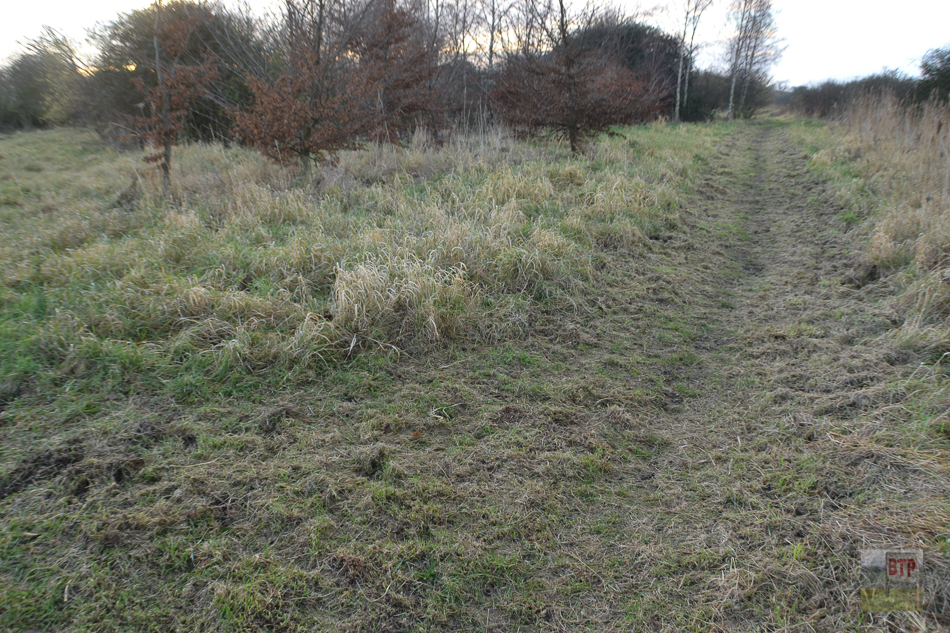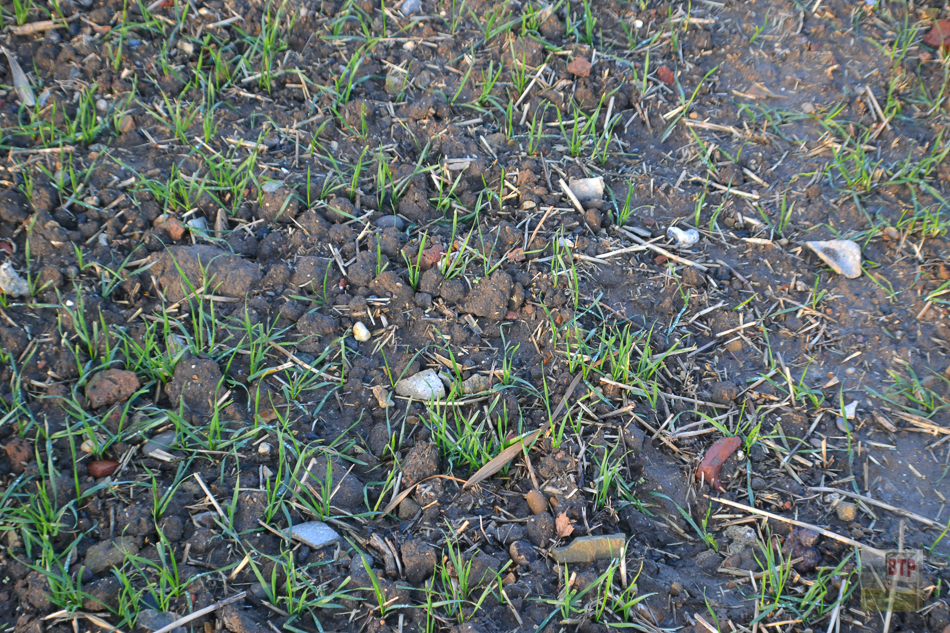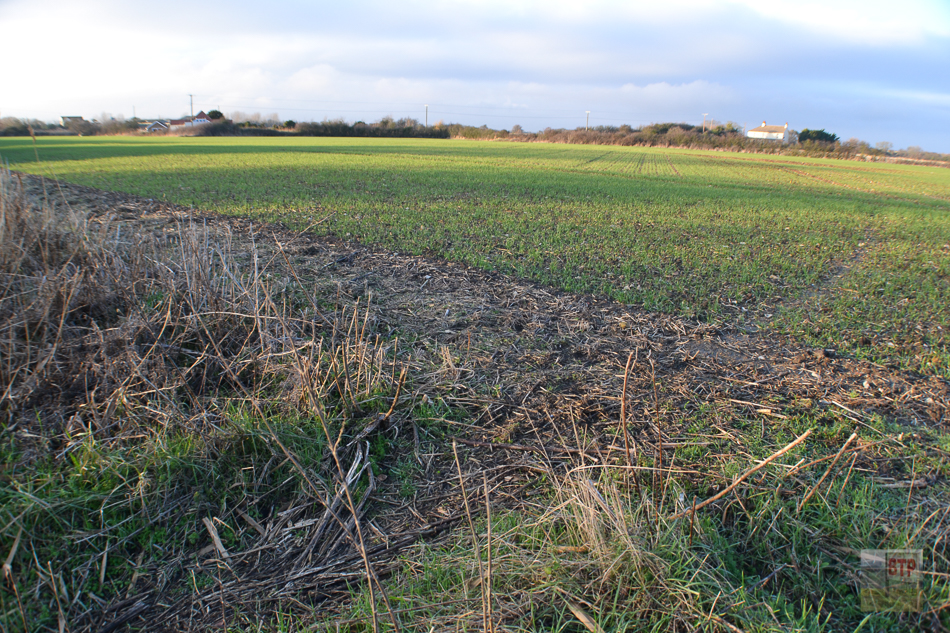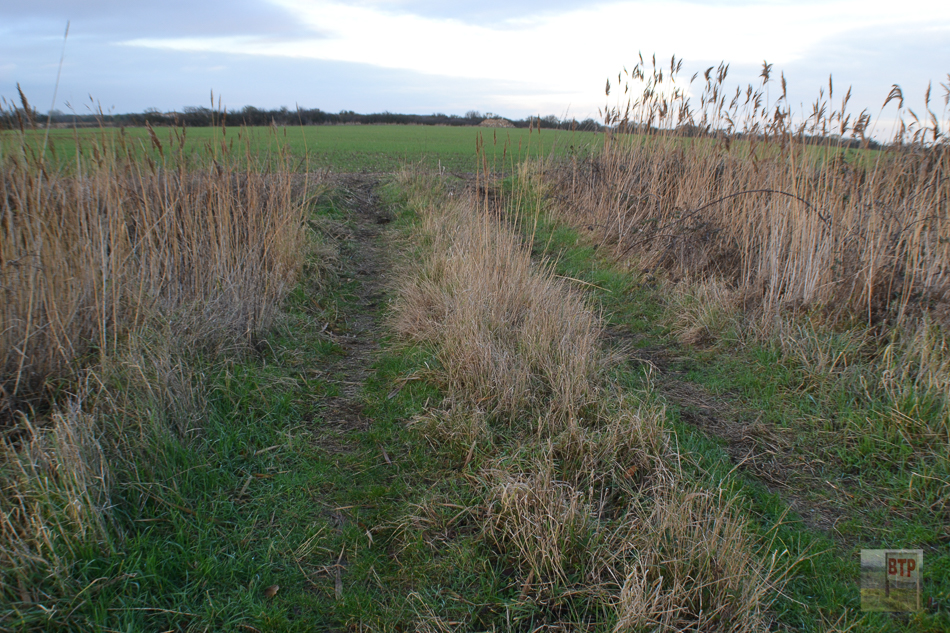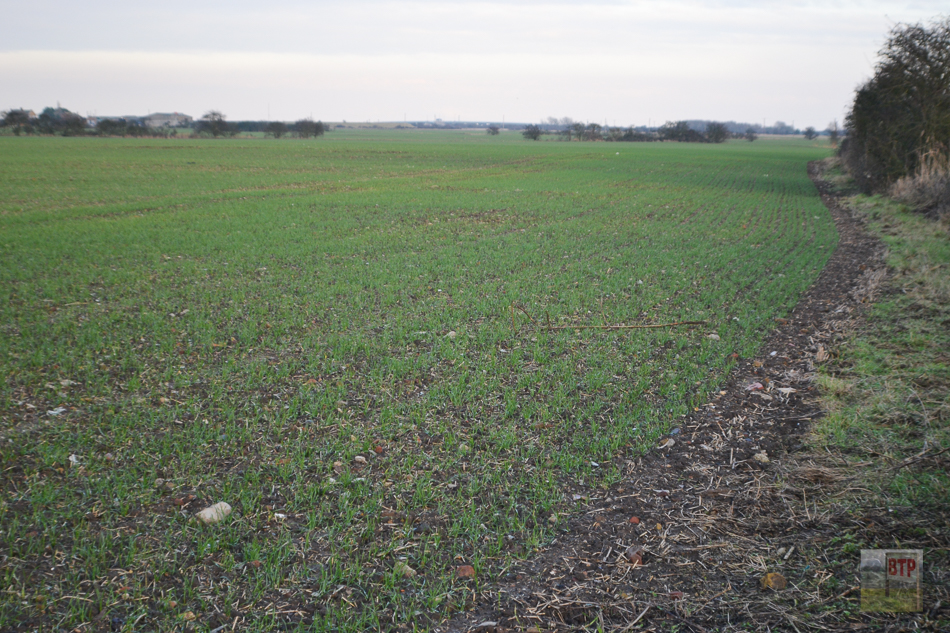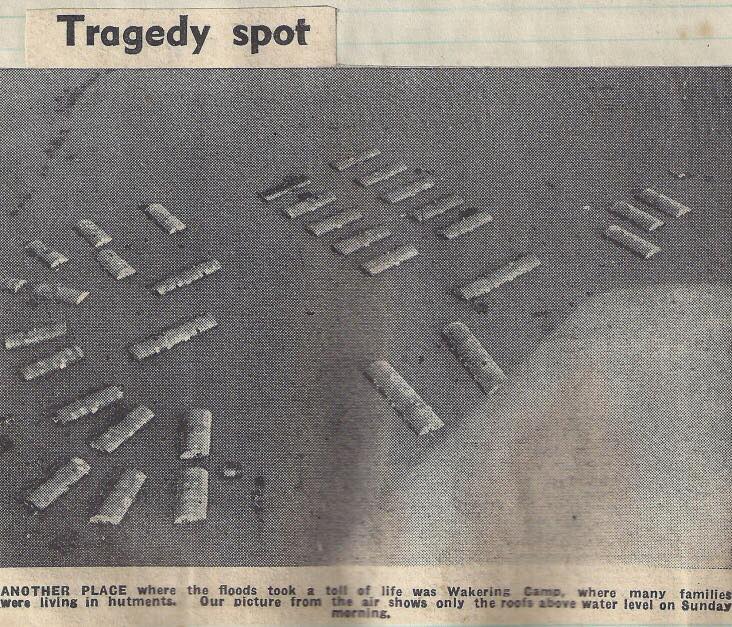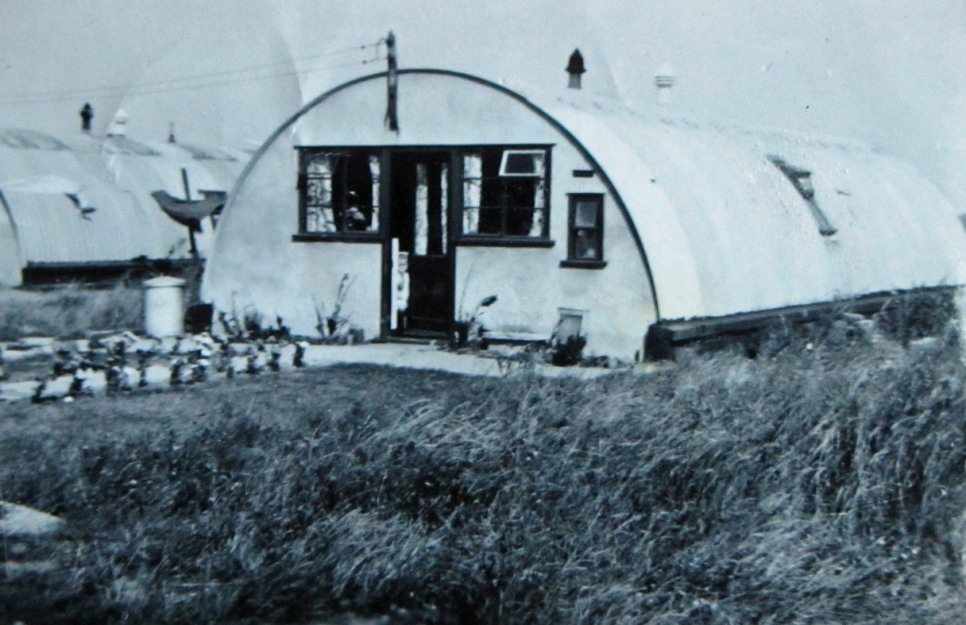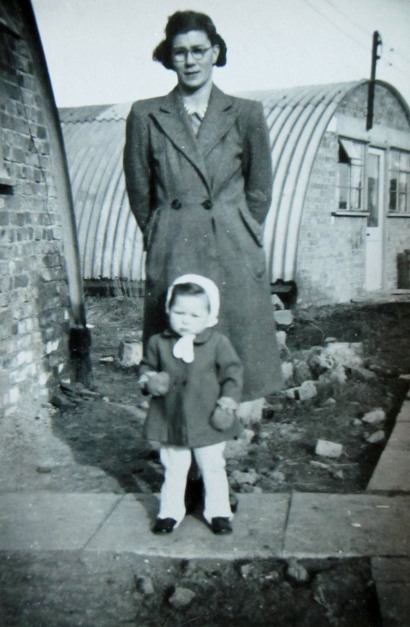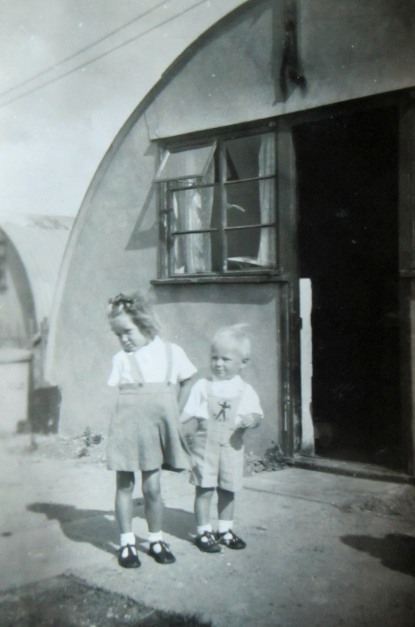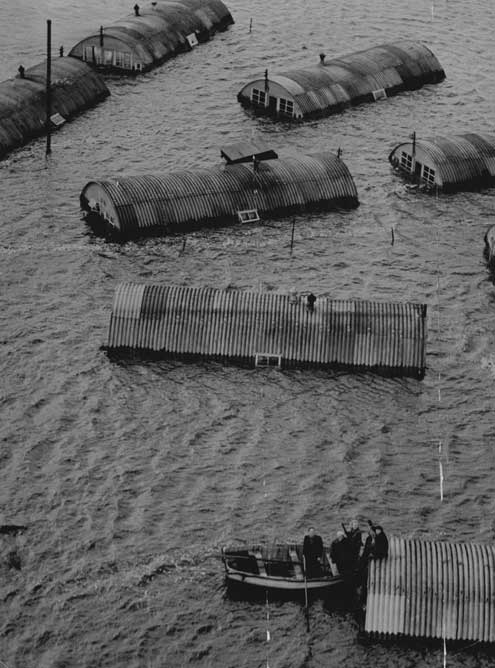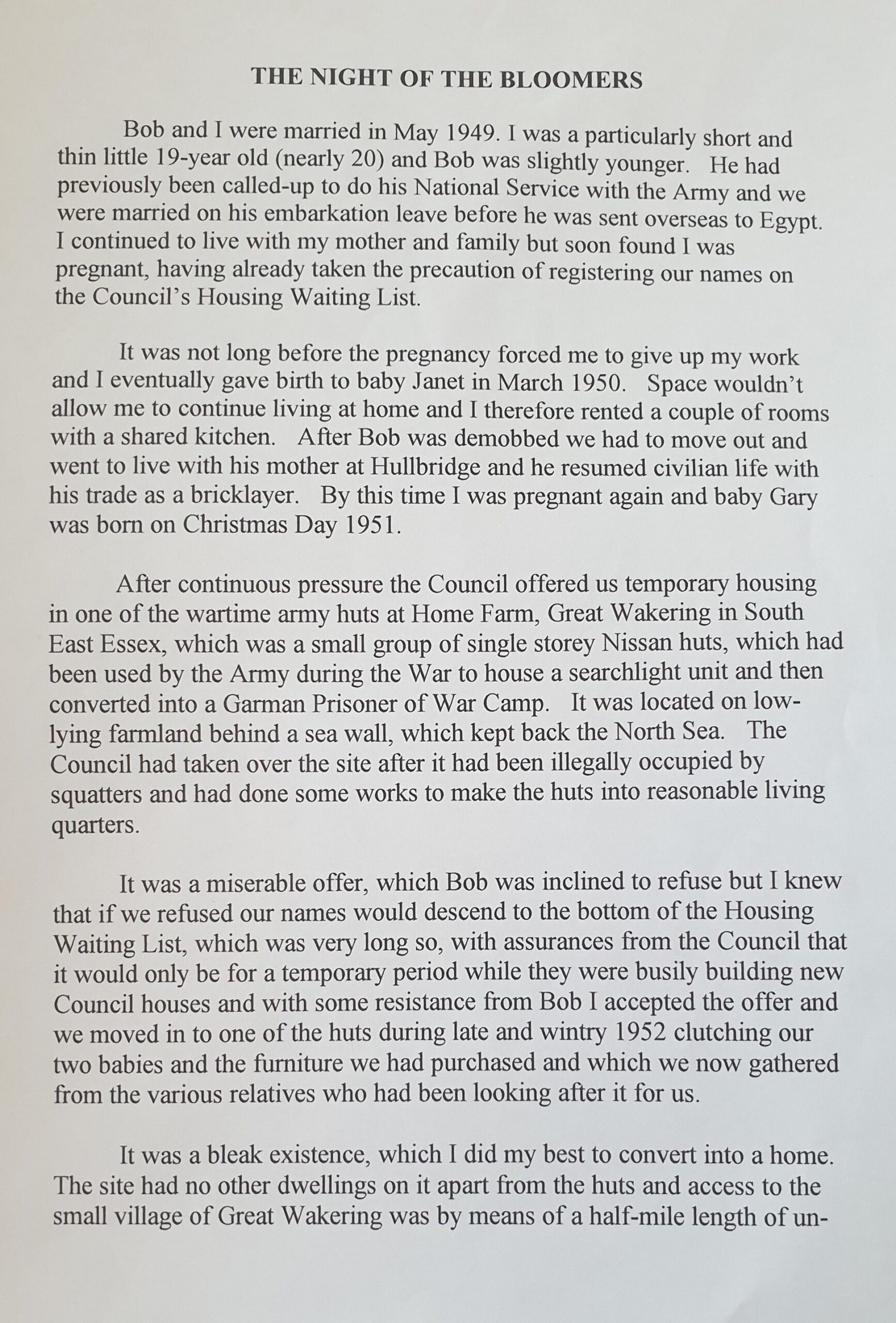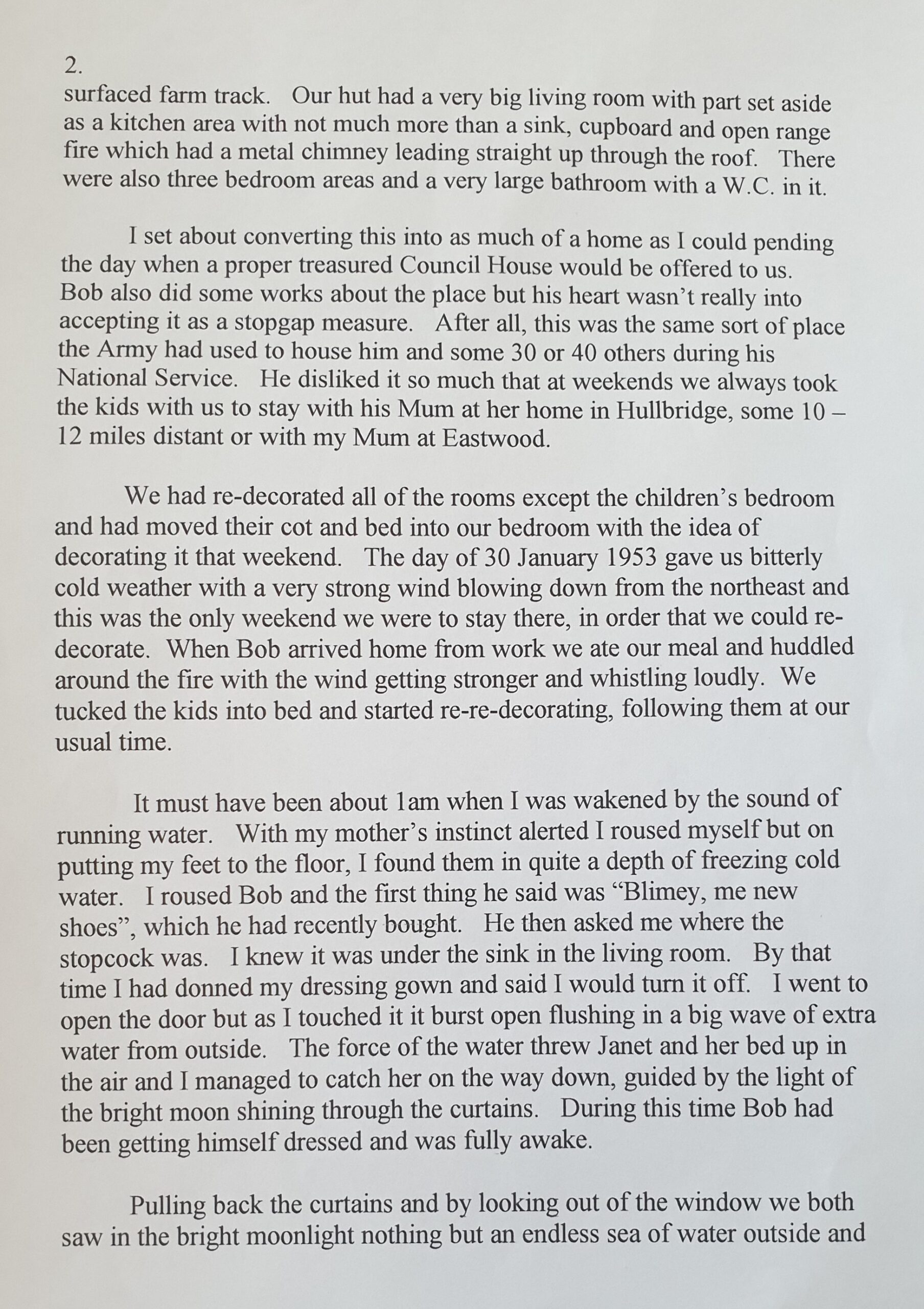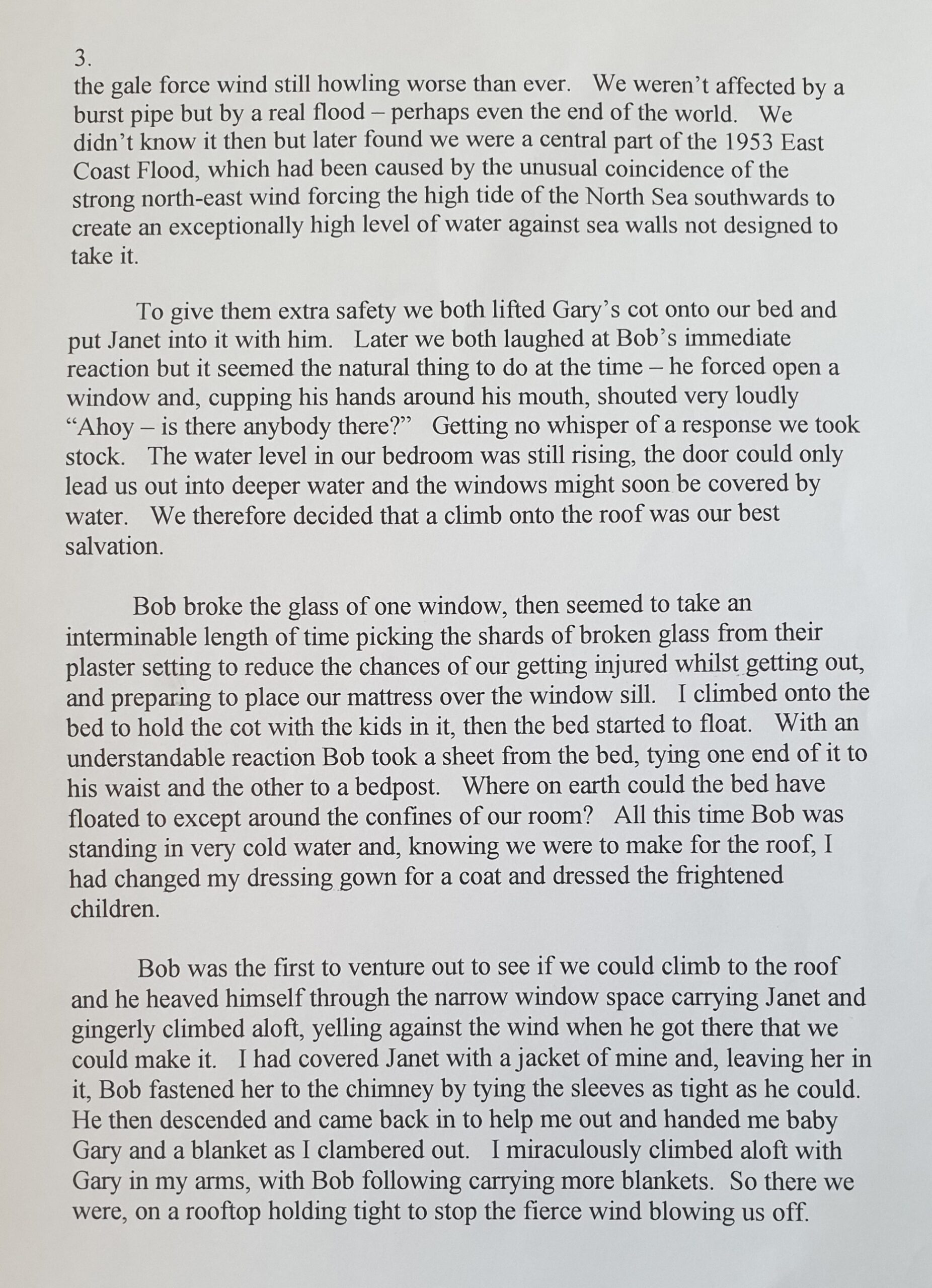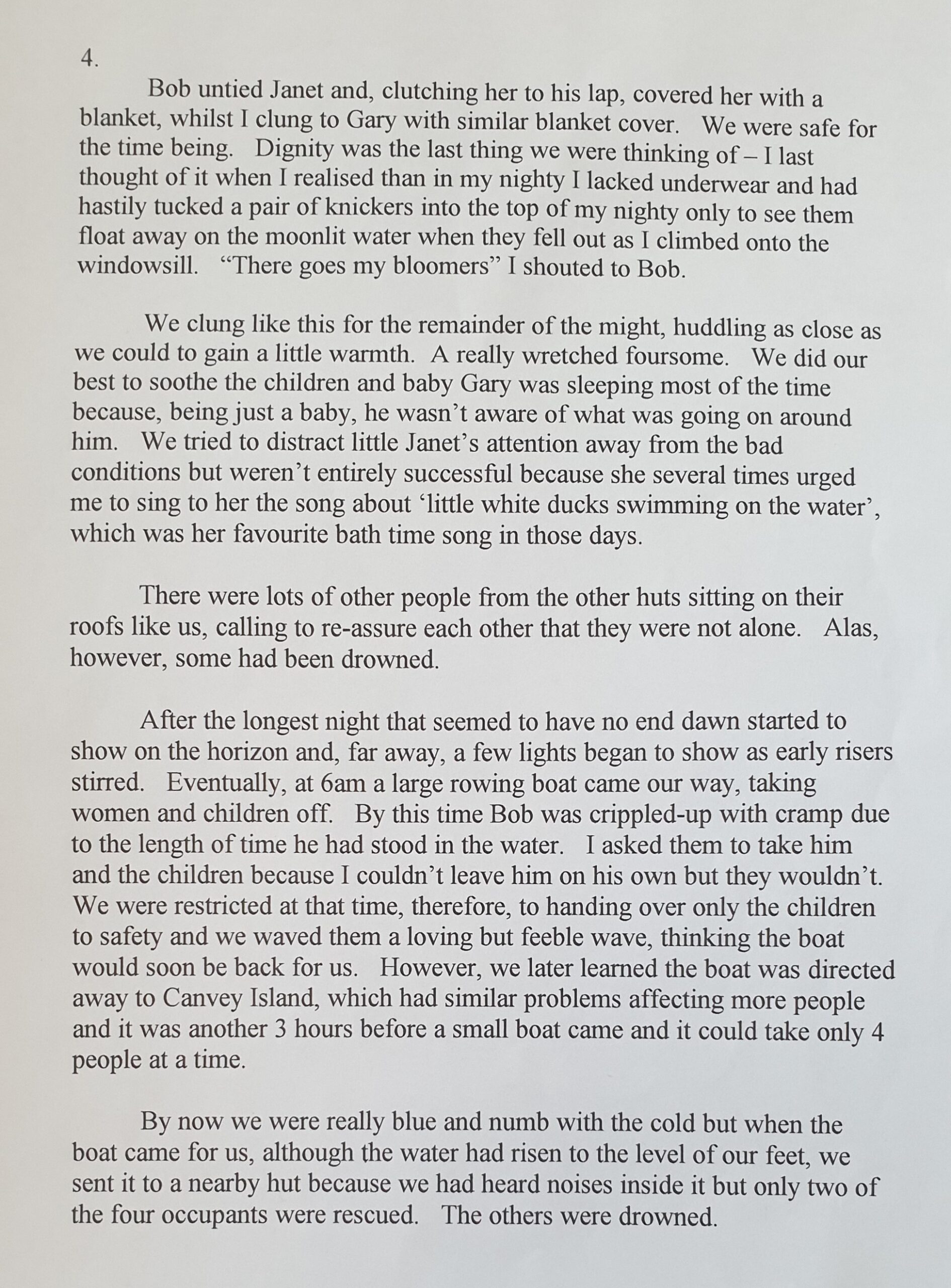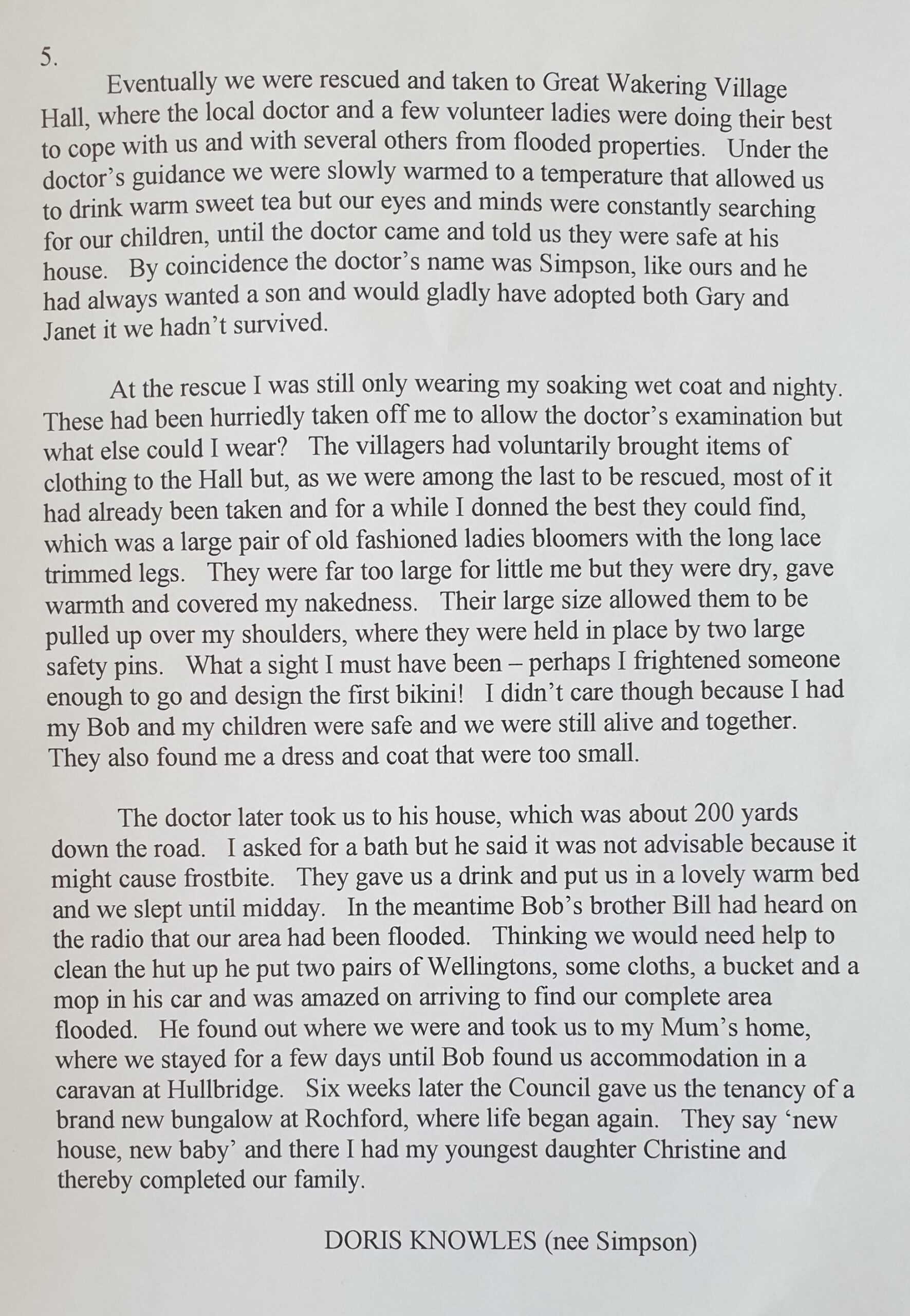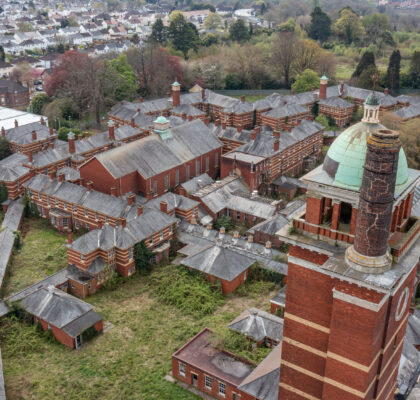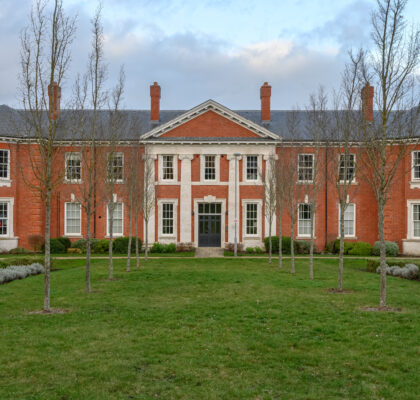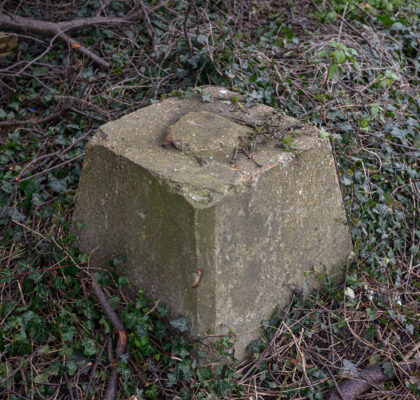Wakering Camp was constructed potentially around June 1944 as a ‘Diver’ battery – a late-war heavy anti-aircraft 3.7-inch gun battery of at least eight guns, established to defend against V-1 flying bombs. It was one of two in Great Wakering, with another four at Foulness. There were at least 43 huts, and in July 1944 it was manned by 110 Regiment and, four months later, by 184 (Mixed) Regiment, 616 Battery. It also possibly saw use as a searchlight battery, according to speculative memoirs. The camp saw use as a Prisoner of War camp immediately following wartime, before being used as temporary housing.
Unfortunately, nothing remains today of Wakering Camp that gives any suggestion to the lively and at-times tragic history of what once stood there. Instead, we are greeted with nothing more than a vast crop field immediately north of Wakering Common. When we visited in 2018, as we were looking across the field wondering if we had found the site, a local gentleman approached us and asked what we were looking at. I had a slight feeling he was asking us for the same reason as we were there, so I told him about the mentions we had heard of a Prisoner of War camp that used to be there. Of course we had stumbled across the right person, and he proceeded to tell us the fascinating past of the camp that he witnessed change over the years as a young boy. The main body of this article is based on his account, although it must be remembered that this is based on memory both of the individual and of myself trying to remember his account!
At the bottom of the article is another memoir; ‘The Night of the Bloomers’, provided by Terri Simpson on behalf of her nan Doris Knowles who lived at the camp during the 1953 Floods and had to be rescued from the rooftop of her home.
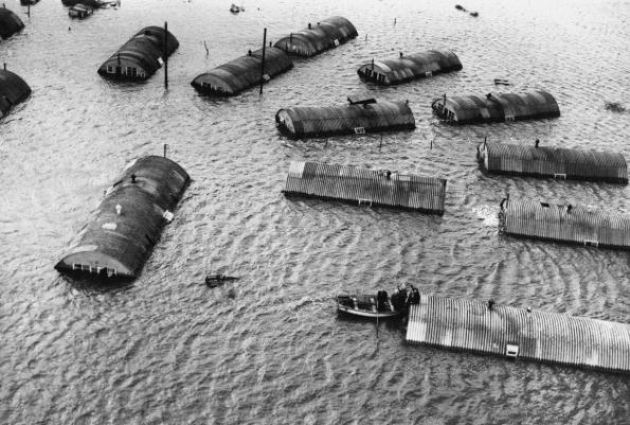
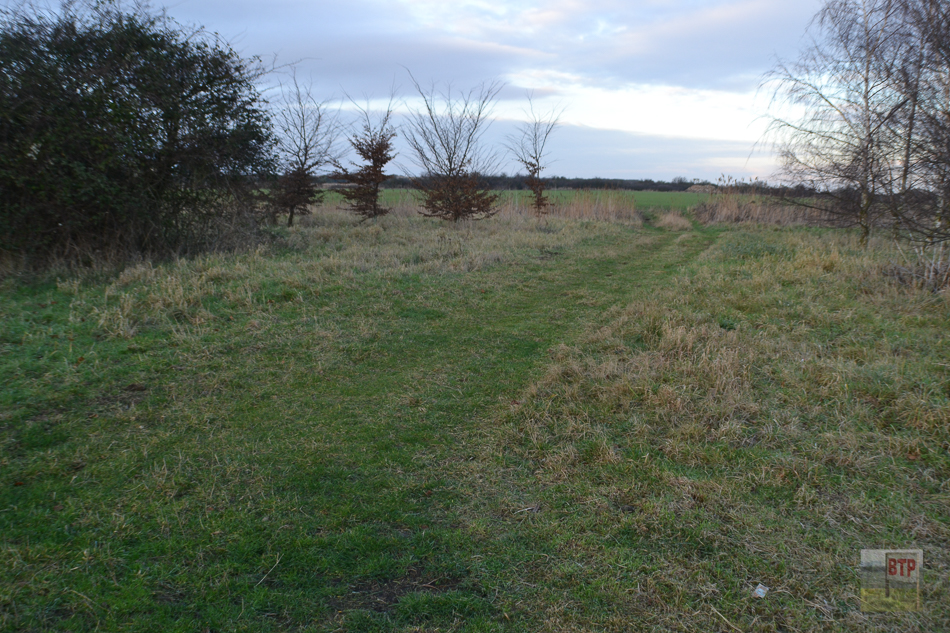
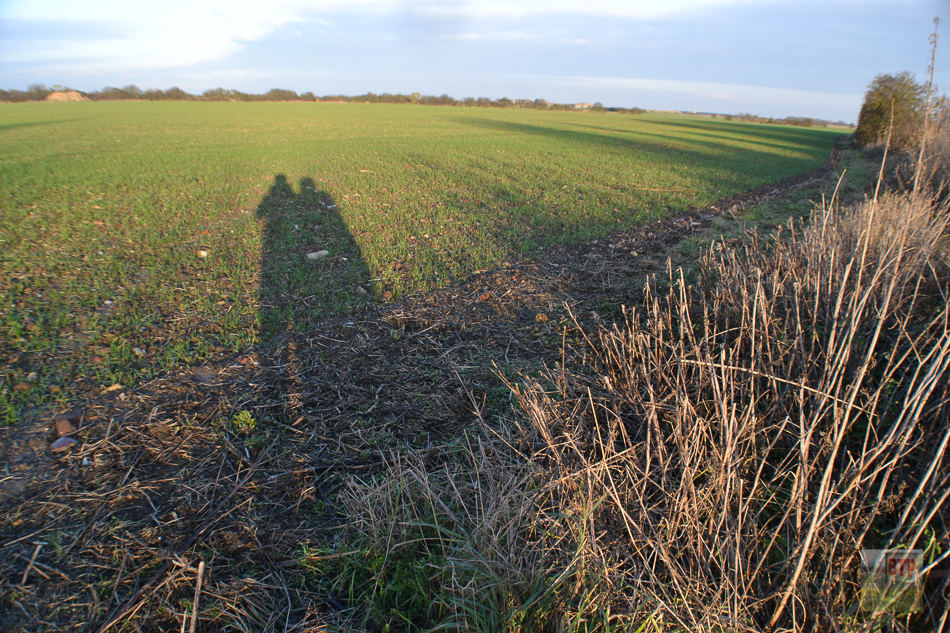
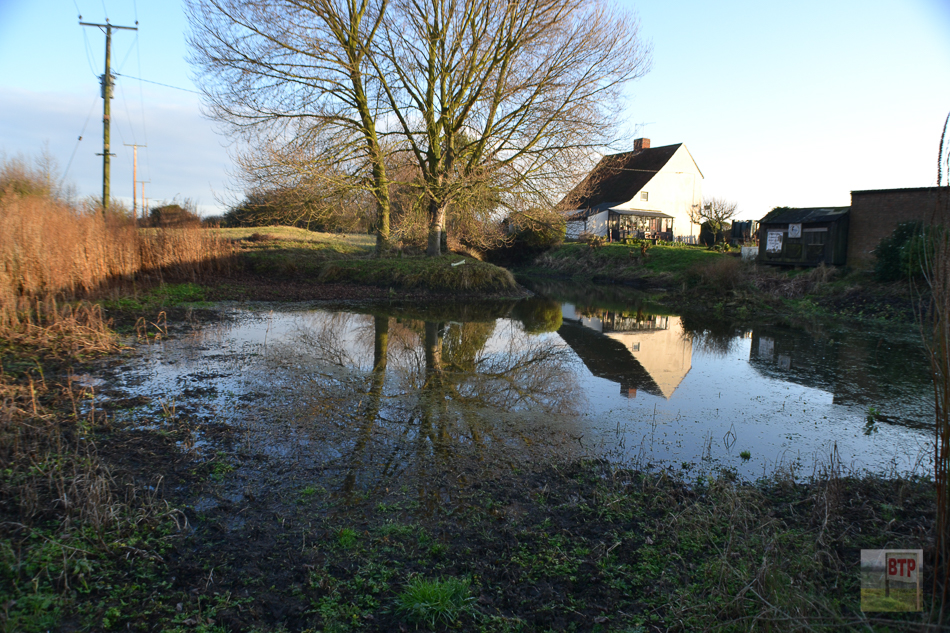
The initial camp was erected at the start of the war to man an anti-aircraft battery. This would have been a ‘Diver’ battery designed to shoot down enemy aircraft, consisting of eight 3.7 inch guns in two rows of four which was typical for such Diver batteries. The field today was split into two – the anti-aircraft guns were in a line facing east to the sea behind a hedge and drain running north to south. This divided the current field into east and west sections, with the army camp in the west and the guns on the eastern edge. The eastern field was simply a big field used by the soldiers for recreation. Roughly in the south-eastern corner of the camp was a cinema-type building. The battery camp initially consisted of around 43 huts. Nissan huts with curved corrugated roofs going round in a circular formation. There was a function-type hall hut immediately west of the entrance road surviving today that connects the camp area to Wakering Common – this was used for dances and Christmas functions etc.
The local resident recalls clearly how just before D-Day a massive road was lain down which ran through the field in a loop back onto the main common road. This was at first a mystery until it was used to take the guns away secretly overnight when D-Day dawned and the soldiers were gone.
In 1944 after the invasion of France, German prisoners were put in the camp and it was put to use as a Prisoner of War camp. Two prisoners worked in the nearby Millers’ dairy farm just south, where the farmhouse still exists today and has done since the late 18th Century. Other PoWs worked at the Star Lane brick fields. The pair working at the farm stayed in Britain and worked there until probably the 1960s. Some former prisoners married local girls even though they were free to leave in 1946. The German prisoners were appreciated amongst the community for their hard work and were seen as friendly people. A few Italian PoWs were billeted in a row of houses at Landswick earlier in the war than the Germans, during the 1943 North Africa campaigns. They were free to roam Wakering. They could have gone home after the war but they stayed rather than return to the Italian army.
After the war and the Germans’ departure from the camp, locals started moving in and it became somewhat of a village. It consisted of 37 huts and families. A big tip pile existed opposite that residents would throw their rubbish on, immediately west of where Miller’s farmhouse is now. People lived there until the North Sea Flood which devastated marshland Essex ruined the huts in 1953. In front of roughly where the local’s friend lived was a hut immediately right of the entrance path, where two people died in the flood failing to break through their hut roof or unable to withstand the freezing conditions on-top. One elderly couple who did not survive we heard singing ‘Abide With Me’ as the freezing water came in; later their bodies were found in their home. The local’s friend living behind them got dragged off the roof as ‘stiff as a board’ from cold after about nine hours by the local’s dad, working for the fire service which ran a dinghy back and forth across the southern ditch on the edge of the common. It took them about twenty-four hours to rescue everyone from the campsite, but many people lost their lives. The local gentleman recalls nine people dying, whereas other sources claim three adults and two children were lost. Many people walked out of the camp before the water got too high, but not everyone did as the water cascaded across the marshes over the primitive seawalls within minutes. Those remaining had to break out onto the roofs of their huts and wait to be rescued in the winter cold.
After the floods ruined the hutment, the site was used as a tip. During the 1990s the site was covered in several feet of top soil which is visibly higher than the surrounding common today. The soil today bears a great deal of building material that could correspond to the structures once on the site. The litter today could be a combination of the demolished army camp buildings and tip waste, or simply coincidental and it was brought from elsewhere.
Then & Now Images:
Today: The camp’s entry track, Nissen hut building materials left in the soil, and the field where the camp once stood. Then: Aerial photography showing layout of the camp in the 1953 floods. Photographs of residents living in camp post-war.
‘The Night of the Bloomers’ Memoir
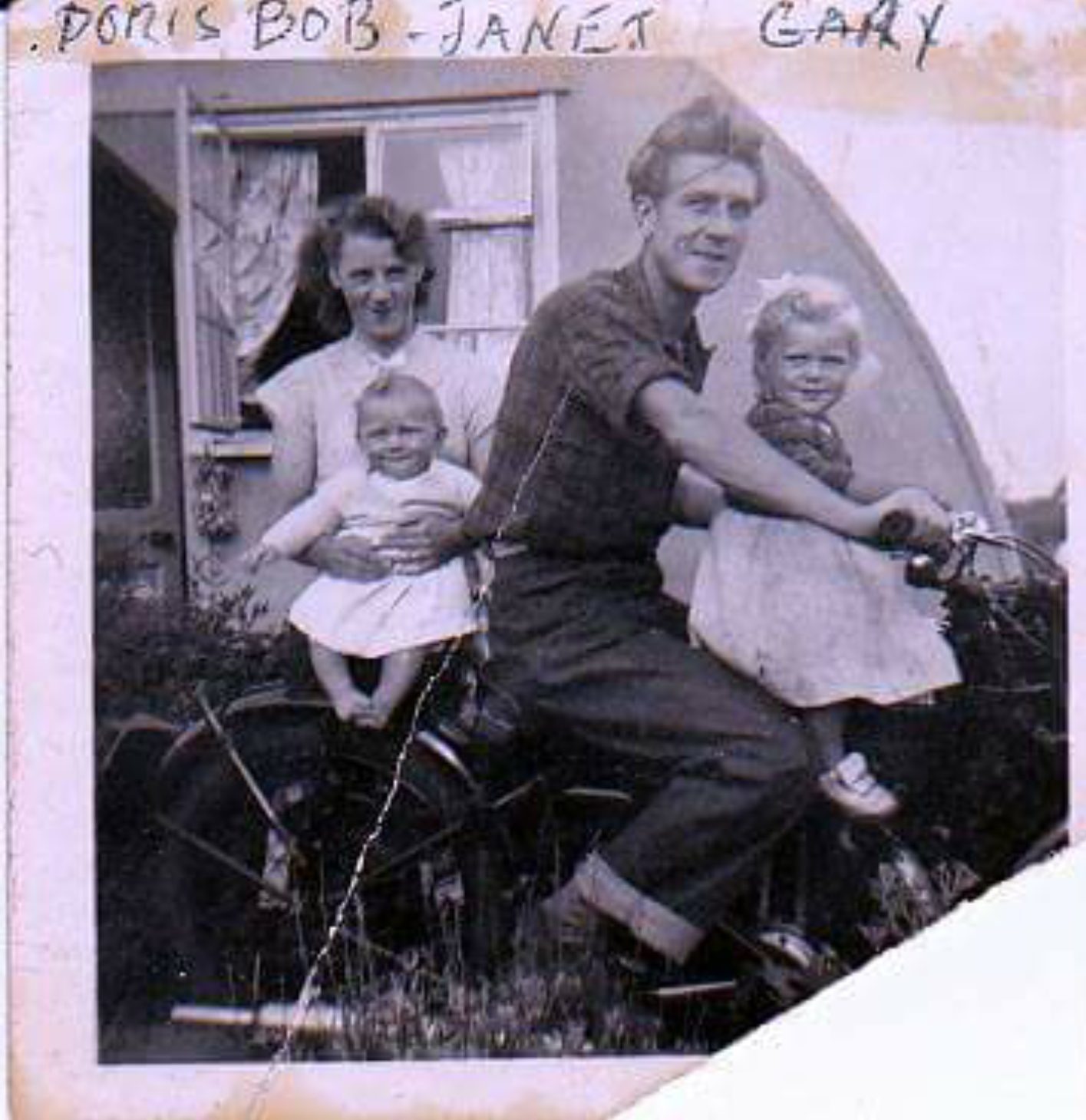
This memoir kindly donated by Terri Simpson was written by her nan Doris Knowles (nee Simpson); a resident of Wakering Camp during the 1953 North Sea Floods, who had to be rescued from the roof of her hut. Her and her husband were housed there after the war while awaiting to be re-homed into a council house, and lived there with their baby son (Terri’s dad) and daughter of around 2/3 yrs (Terri’s aunt). Terri’s nan often recounted the story to him when he was growing up, so it must have been quite an experience. You can read this valuable insight into the under-documented camp on that fateful night below:
Sources:
Talk with local resident – living memory
Terri Simpson’s nan’s memoir
http://www.heritagegateway.org.uk/Gateway/Results_Single.aspx?uid=MEX1036309&resourceID=1001
https://www.wakeringcommon.com/history
This entry was posted in Location Report
